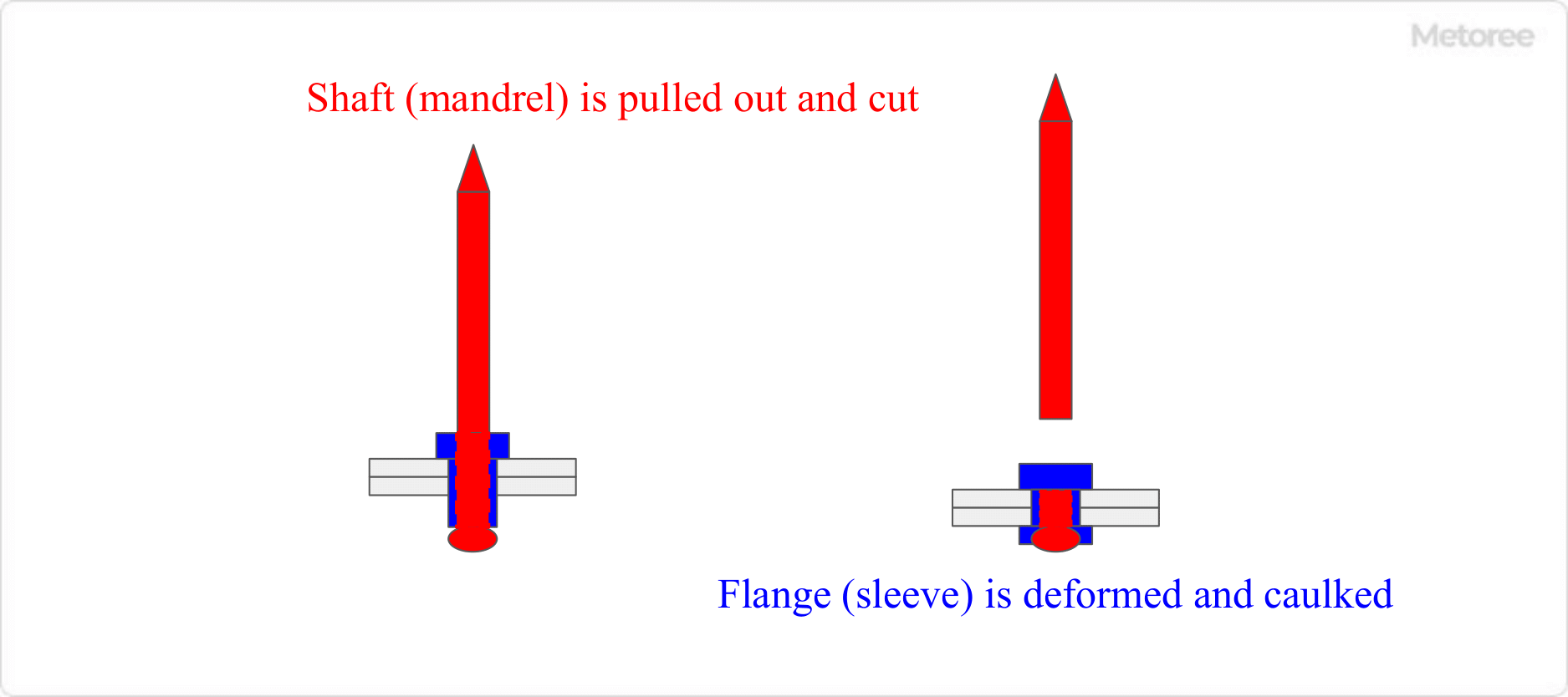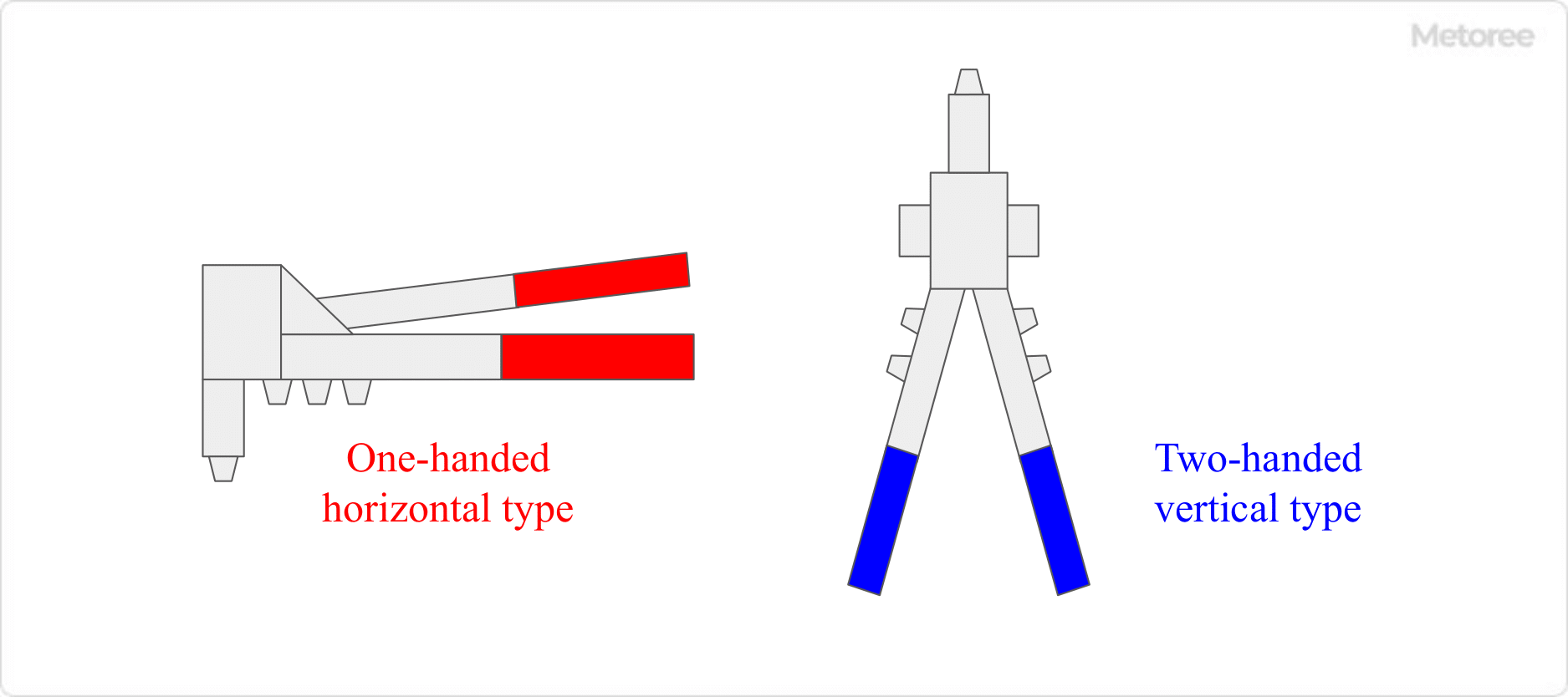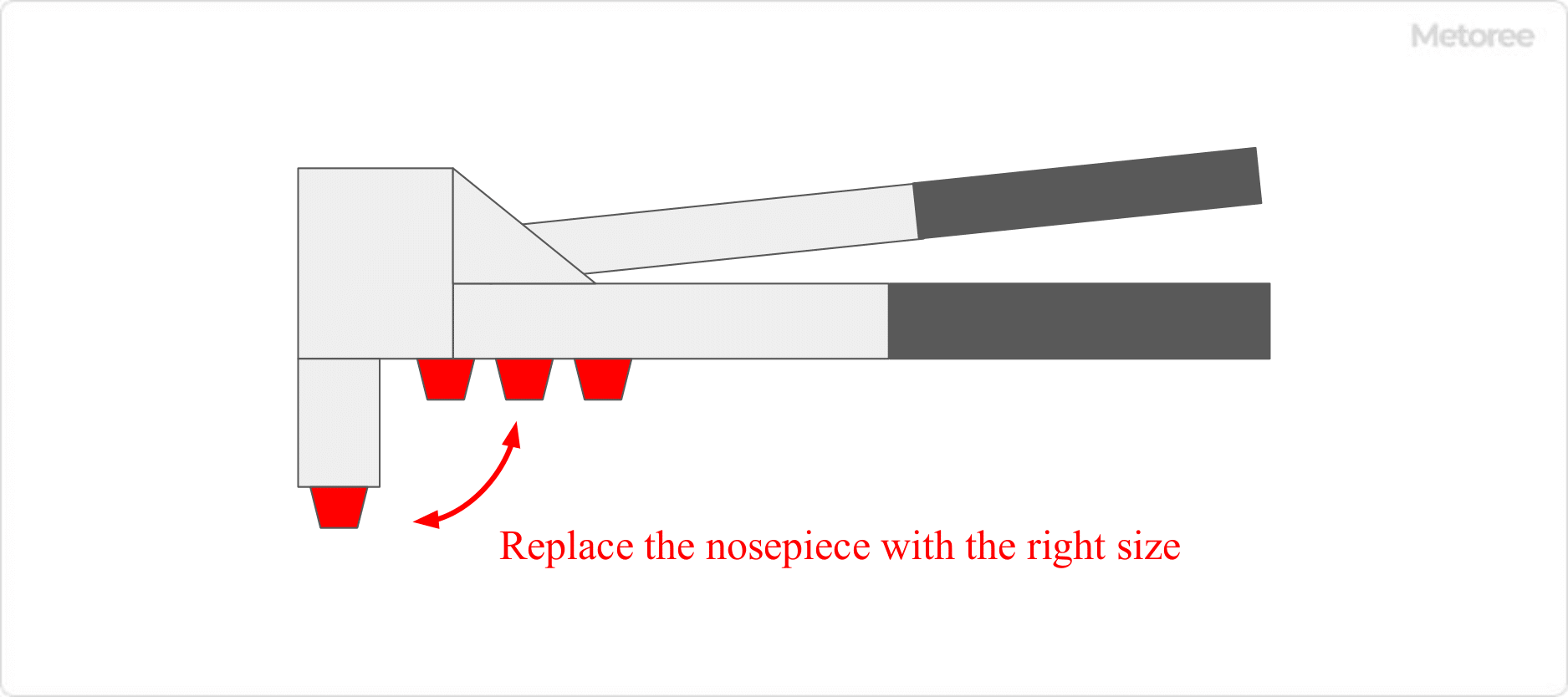What Is a Hand Riveter?
A hand riveter is a tool for joining metal sheets by riveting them with pins called rivets.
As the name “hand” implies, the rivets are manual (by gripping the rivets). In addition to hand riveters, there are electric riveters that use electrical power, and air riveters that use compressed air.
Electric riveters and air riveters are expensive, but hand riveters are relatively inexpensive and easily used for DIY projects.
Uses of Hand Riveters
Hand riveters are mainly used to join metal plates. In addition to metal plates, hand riveters can also be used to join resins and fabrics, etc. They are often used for DIY crafts and repairs, and are useful for joining thin sheets that are difficult to fasten with screws or bolts.
They can join anything from gutters, window frames, fences, shutters, and hinges, but hand riveters are not suitable for continuous work because they are manual and require a strong grip. If you need to rivet many places, we recommend using an electric riveter or air riveter.
Principle of Hand Riveters

Figure 1. Basic information on catechol
Hand riveters join metal sheets together by deforming the flange (sleeve) during the process of pulling out the shaft (mandrel) of the rivet. The rivet does not loosen like a screw or bolt. Once riveted, the joint is semi-permanent.
To remove a rivet, it is necessary to destroy the rivet by drilling a hole with an electric drill or grinding the head with a grinder.
How to Choose a Hand Riveter
There are three points to consider when choosing a hand riveter
1. One-Handed Horizontal Type and Two-Handed Vertical Type

Figure 2. One-handed horizontal type and two-handed vertical type
There are two types of hand riveters: one-handed horizontal and two-handed vertical. The most common hand riveter is a one-handed horizontal type. However, it may not be possible to rivet if the riveting position is too narrow or too deep.
If you need to rivet in places that are difficult to work with, we recommend the flexible type, which allows you to change the direction of the head. It can be oriented not only horizontally and vertically but also diagonally.
If you need to use thicker rivets (e.g., 6.4 mm) and thicker plates to be caulked, the two-handled vertical type is recommended. When using rivets made of hard materials, such as steel or stainless steel, two-handed rivets are easier to apply force to, making them easier to use.
2. Grip Thickness
Hand riveters are tools that require a strong grip. Especially for those who are not confident in their grip strength, we recommend that the grip be thick, easy to grasp, and made of non-slip material. Those processed with soft materials are less likely to cause hand pain.
3. Stand-Alone and Set
For beginners, a set of a hand riveter and several types of rivets is recommended. It is easy to get lost because there are many types of rivets in different sizes and materials, or conversely, the rivets you want may not be available at your local home improvement center.
Other Information on Hand Riveters
How to Use a Hand Riveter

Figure 3. Nosepiece
The hand riveter first drills a pre-drilled hole in the metal plate to be joined. The pre-drilled hole should be 0.1 mm to 0.2 mm larger than the rivet diameter. The rivet diameter is the diameter of the sleeve (the thick one), not the shaft (the thin one). Note that too large a pre-hole will reduce the ground contact area of the flange and reduce joint strength.
To determine which size rivet to use, look at the “appropriate caulking thickness” listed in the rivet instruction manual. The rivet thickness is listed as “1.6 to 3.2 mm,” etc. Check to make sure that the total thickness of the plate you want to rivet is within the range.
To start the process, insert the sleeve (flange) side of the rivet into the bottom hole. Then insert the shaft (mandrel) side into the hand riveter to complete the setting. Finally, squeeze the grip of the hand riveter to pull out the shaft (mandrel) of the rivet and tighten it.
If the diameter of the hand riveter and the shaft (mandrel) do not match, the nosepiece must be replaced with an appropriate size.